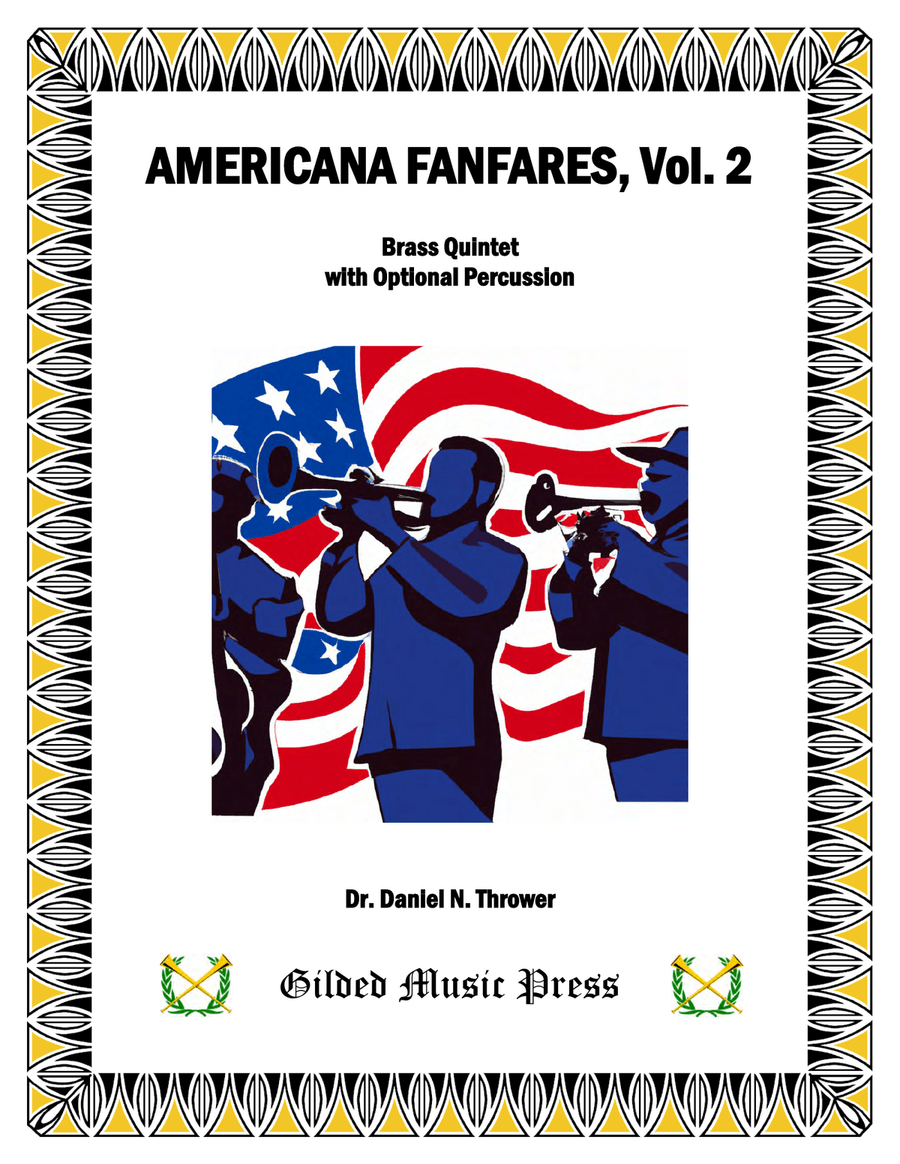Brass Quintet - Level 4 - Digital Download SKU: A0.1489490 Composed by Dr. Daniel N. Thrower. Chamber,Classical,Historic,Patriotic. 38 pages. Https://gildedmusicpress.com/ #1066354. Published by https://gildedmusicpress.com/ (A0.1489490). Three of these seven short pieces are worthy to open any brass quintet concert or recital. Two fanfares are too short for a concert feature but work extremely well in a ceremony or celebratory setting. The last two short pieces aptly serve contrasting special purposes, as explained below.“Fort Pierre Fanfare” is about 40 seconds in duration, and was composed to open the feature concert at the South Dakota Bandmasters Association convention in 2022. Offutt Brass, from the US Air Force Heartland of America Band, was invited to perform that concert. Before the final piece of the concert, when gifts were exchanged between the sponsor and performers, beautiful presentation copies of the sheet music were presented to the sponsor. In performance, staging directions on the music can be extremely effective or cringy, depending on how they are conveyed. If there is any inkling that there may be a cringe factor, ignore them, and play the fanfare already on stage.“Enduring Freedom Fanfare” is nearly a minute of music. It was composed as a gift for the outgoing Commander of the US Air Force Heritage of America Band, Major Rafael Toro-Quiñones. His leadership was strong and inspiring, and he held a place of high esteem among many of the fine military musicians that he led. The Change of Command ceremony was toward the end of the Covid-19 shut-downs, so the work was not performed at the ceremony. Chief Remley, from the command’s satellite location in Nebraska, hand-delivered some finely printed presentation copies to Major Toro-Quiñones.“Noble Eagle Fanfare” is slightly over a minute in length, and, like “Enduring Freedom Fanfare,” was composed as a gift for another outgoing Commander of the US Air Force Heritage of America Band, Captain David Neil Regner.“Pilgrims’ Fanfare” was composed on what many Americans acknowledge as “Pioneer Day,” 24 July 2023. Not only honoring the thousands of pioneers that settled the western United States, but also the pilgrims that voyaged across the ocean to settle in the new continent. It is about 15 seconds in duration and is effective for any occasion in need of a magnificent fanfare.“Flightline Fanfare,” as its title implies, was composed for the ribbon cutting ceremony of the dedication of the newly renovated flightline at Offutt Air Force Base in Nebraska. Unfortunately, the ceremony itself was altered last-minute, and the 15-second fanfare was not used. However, like “Pilgrims’ Fanfare,” it is very handy for any event demanding a splash of pomp.“American Interlude” is a soft 75-second underscore for an MC’s moving speech or dedication. It was originally composed as a smooth segue between two moving patriotic pieces of different keys in a concert setting, but can be used in any similar appropriate situation.“Troop 184” is dedicated to my childhood BSA Scoutmaster, Gerry Nielson, who molded me in significant ways into the man I am decades later. It is functional music, akin to a fight song, and can be easily marched to. Words may be crafted as a customized hiking ditty, or it can be featured before or after ceremonies as prelude or processional music. The duration can also be customized, as there is a written optional repeat, lengthening the tune from 45 seconds to a minute and a half.
